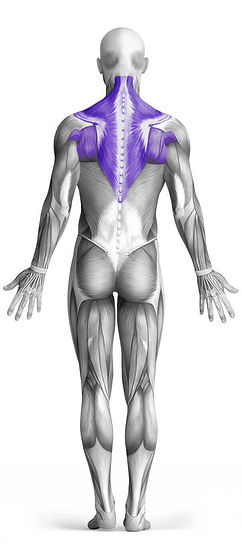Palms In Bent-Over Dumbbell Row 101 Video Tutorial
0

Timer
Hour
Minute
Second
Stopwatch
00:00:00:00
Overview
The "Palms In Bent-Over Dumbbell Row" is an effective upper back exercise that primarily targets the muscles of the upper back, including the rhomboids and trapezius. It also engages secondary muscles such as the biceps and lats. To perform this exercise, hold a dumbbell in each hand with your palms facing inward, then bend at the hips and knees, maintaining a neutral spine. Pull the dumbbells toward your torso, keeping your elbows close to your body. This movement helps build strength and definition in the upper back while also improving posture and stability.
How to Perform
Choose the right dumbbells for your strength level and place them on the floor in front of you.
Stand tall with your feet positioned close together, facing the dumbbells.
Bend your knees slightly while maintaining a neutral spine. Squat down to grasp the dumbbells with a neutral grip, meaning your palms should be facing inward.
With your back straight and knees slightly bent, lift the dumbbells from the floor. Lower them just below knee height by allowing them to slide down your thighs.
Pull the dumbbells toward your torso, aiming to bring them close to your chest. Squeeze your shoulder blades together at the top of the movement.
Hold for a brief moment, then slowly lower the dumbbells back to the starting position, controlling the descent.
Repeat for the desired number of repetitions, focusing on smooth, controlled movements throughout the exercise.
★ Bonus: For exercises that involve external weights (such as dumbbells, barbells, or machines), the One Rep Max (1RM) calculator can help you estimate your maximum lifting capacity. Use it to track your strength progress and adjust your training for optimal results.
Tips
Focus your gaze forward and keep your head aligned with your spine to maintain a neutral back position during the entire movement.
This will help you avoid any slouching or rounding of the back, ensuring proper posture and reducing the risk of injury.
How Not to Perform
Avoid Rounding Your Back: Keep your spine neutral throughout the movement. Do not round your back, as this can lead to strain on your lower back and reduce the effectiveness of the exercise. Always engage your core to support your spine.
Don’t Use Momentum: Avoid jerking or swinging the dumbbells upward. This wastes energy and reduces the engagement of the target muscles. Instead, focus on a controlled, steady movement, especially when lifting and lowering the weights.
Don’t Overextend the Elbows: Avoid fully extending your arms at the bottom of the movement. This can put unnecessary stress on the shoulder joints. Keep a slight bend in your elbows throughout the exercise to keep the tension on the upper back.
Don’t Let Your Shoulders Shrug: Avoid letting your shoulders rise toward your ears during the rowing motion. Shrugging the shoulders takes the focus away from the upper back and can lead to neck strain. Keep your shoulders relaxed and down.
Avoid Looking Down: Don’t drop your head or look downward while performing the row. This can cause your back to round and compromise your posture. Keep your head up, in line with your spine, and gaze forward.
Don’t Use Too Much Weight: Lifting weights that are too heavy can lead to poor form and unnecessary strain. Start with a manageable weight to ensure you can perform the exercise with proper form and control.
Don’t Let Your Knees Lock: Avoid locking your knees or extending them too far during the movement. This can strain the knee joints and reduce stability. Keep a slight bend in your knees throughout the entire exercise.
Don’t Pull Too High: Avoid pulling the dumbbells too far, such as above your chest. The focus should be on bringing the dumbbells just under your chest, which effectively targets the upper back. Pulling too high can shift the focus to the shoulders.
Don’t Rush the Movement: Avoid rushing through the reps. Quick, uncontrolled movements waste energy and reduce muscle engagement. Instead, take your time to execute each rep with precision and control.
Variations
Variations of fitness exercises refer to different ways of performing a specific exercise or movement to target various muscle groups, intensities, or goals. These variations aim to challenge the body differently, prevent plateaus, and cater to individuals with varying fitness levels.
Alternatives
Alternative exercises in fitness refer to different movements or activities that target similar muscle groups or serve the same training purpose as the primary exercise. These alternative exercises can be used as substitutes when the original exercise is unavailable or challenging to perform due to various reasons such as equipment limitations, injuries, or personal preferences.








